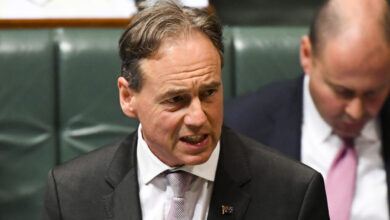

SYDNEY — Keeping warm down has become more expensive as coal-fired power outages take a toll on Australia’s energy market.
Prices rebounded significantly between April and June because of outages and colder-than-average weather, said the Australian Energy Market Operator.
Wholesale electricity prices, or those paid by retailers before they supply to customers, averaged AU$95 ($70.07) per megawatt-hour.
This compared with AU$37 (27.29) per megawatt-hour in the first three months of 2021.
“The start to winter tested power system resilience, with generator outages contributing to tightening supply conditions and significant electricity price volatility over the quarter,” said Violette Mouchaileh, chief markets officer of Australian Energy Market Operator.
The price hikes were driven largely by coal-fired power station outages.
A turbine hall exploded at Queensland’s Callide Power Station in May.

It tripped generators and transmission lines, leading to volatile prices in that state and in the southeastern state, New South Wales.
Meanwhile, flood damage at Victoria’s Yallourn power station meant three units were taken offline for repairs in June.
Gas-powered generation provided backup for Callide and Yallourn, and prices went up for the east coast as the output increased significantly from May to June.
They averaged AU$8.20 ($6.05) a gigajoule for the April to June quarter, nearly double the price from the same period in 2020.
They also increased from an average of AU$6.03 ($4.45) a gigajoule between Jan and March this year.
Mouchaileh said despite the resurgence in high prices, negative and zero spot prices were also more common during the quarter occurring in 5.5% of all trading intervals, up from 4 percent in the second quarter of 2020.
“Contrasting recent quarters, the occurrence of negative prices was no longer confined to South Australia and Victoria, with increased prevalence in Queensland and Tasmania.”
Instantaneous renewable penetration or the ratio of renewable power to output load at any given instant reached an all-time high of 57 percent on April 11, 2021, between 11 AM and 11:30 AM, up from the previous best record of 56 percent in October 2020. This included grid-scale wind, solar and hydropower, and rooftop solar panels.
Australia has the world’s seventh-highest wholesale gas prices, as per the Institute for Energy Economics and Financial Analysis.
“Colder-than-average weather across the eastern seaboard compounded price pressures,” the Australian Energy Market Operator said.
National energy market demand for the second quarter rose by 250 megawatts compared to the same period in 2020.
This reversed a downward trend since 2018.
Perth had its coldest June in 31 years.
There was a 71 percent rise in heating requirements compared to the second quarter of 2020.
Edited by Saptak Datta and Krishna Kakani
The post Cold Weather, Coal-Power Outages Drove Up Australia’s Energy Prices appeared first on Zenger News.





